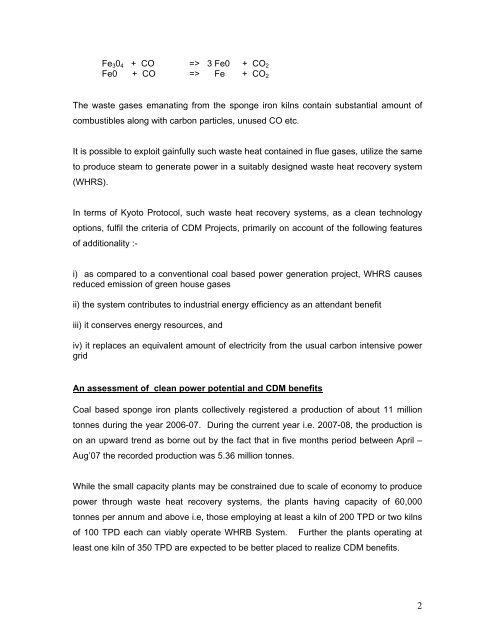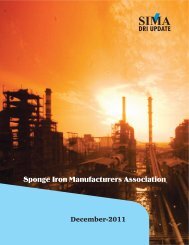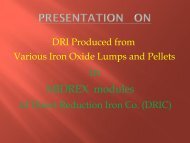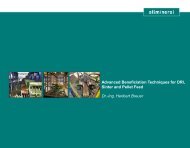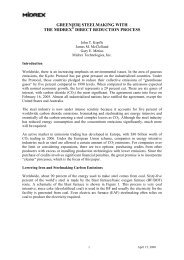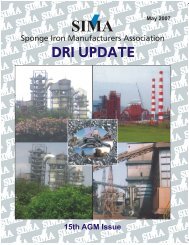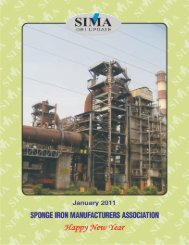Carbon Trading Potential in Indian Sponge Iron Sector - A ...
Carbon Trading Potential in Indian Sponge Iron Sector - A ...
Carbon Trading Potential in Indian Sponge Iron Sector - A ...
Create successful ePaper yourself
Turn your PDF publications into a flip-book with our unique Google optimized e-Paper software.
Fe 3 0 4 + CO => 3 Fe0 + CO 2<br />
Fe0 + CO => Fe + CO 2<br />
The waste gases emanat<strong>in</strong>g from the sponge iron kilns conta<strong>in</strong> substantial amount of<br />
combustibles along with carbon particles, unused CO etc.<br />
It is possible to exploit ga<strong>in</strong>fully such waste heat conta<strong>in</strong>ed <strong>in</strong> flue gases, utilize the same<br />
to produce steam to generate power <strong>in</strong> a suitably designed waste heat recovery system<br />
(WHRS).<br />
In terms of Kyoto Protocol, such waste heat recovery systems, as a clean technology<br />
options, fulfil the criteria of CDM Projects, primarily on account of the follow<strong>in</strong>g features<br />
of additionality :-<br />
i) as compared to a conventional coal based power generation project, WHRS causes<br />
reduced emission of green house gases<br />
ii) the system contributes to <strong>in</strong>dustrial energy efficiency as an attendant benefit<br />
iii) it conserves energy resources, and<br />
iv) it replaces an equivalent amount of electricity from the usual carbon <strong>in</strong>tensive power<br />
grid<br />
An assessment of clean power potential and CDM benefits<br />
Coal based sponge iron plants collectively registered a production of about 11 million<br />
tonnes dur<strong>in</strong>g the year 2006-07. Dur<strong>in</strong>g the current year i.e. 2007-08, the production is<br />
on an upward trend as borne out by the fact that <strong>in</strong> five months period between April –<br />
Aug’07 the recorded production was 5.36 million tonnes.<br />
While the small capacity plants may be constra<strong>in</strong>ed due to scale of economy to produce<br />
power through waste heat recovery systems, the plants hav<strong>in</strong>g capacity of 60,000<br />
tonnes per annum and above i.e, those employ<strong>in</strong>g at least a kiln of 200 TPD or two kilns<br />
of 100 TPD each can viably operate WHRB System. Further the plants operat<strong>in</strong>g at<br />
least one kiln of 350 TPD are expected to be better placed to realize CDM benefits.<br />
2


